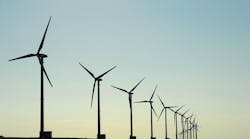About 15 years ago, Germany embarked on an ambitious plan to re-engineer how it got its electricity. Its goals were noble, but that alone hardly guarantees success. Let’s take a look at those goals and see how they compare to the results so far.
One of the main goals was to reduce reliance on fossil fuels and cut carbon dioxide emissions. Germany also wanted to boost its portfolio of renewable energy. As a coal-rich country, these were major challenges. So it forced utilities to buy electricity from renewable sources (wind and solar) at above-market rates and regardless of whether the electricity was needed. This subsidy could last through 2020. It’s been a boon for solar plants and wind turbine operators. In 2009, for example, utilities paid eight times the market price for electricity if it came from a solar panel. It was also a good deal for Chinese plants making solar panels.
But Germany does generate nearly 15% of its power from wind and solar. But as a result, German consumers pay three times what U.S. consumers do for electricity. And over 800,000 Germans (1% of the population) have had their power cut off for being unable (or unwilling) to pay the power bill. Energy-intensive industries like steel and car manufacturing account for 25% of Germany’s economy, and many of those businesses are looking at the lower energy prices in the U.S. and thinking about moving production here for the cheap electricity.
Germany generates nearly 15% of its power from wind and solar.
The German government also believes, and rightly so, that it is imperative they upgrade the electrical grid to handle the influx of small, intermittent producers like wind and solar, a project that will cost at least $33 billion. With the grid, supply has to meet demand. Too much electricity damages the grid; too little causes brownouts.
Germany suffered a double whammy when a Japanese reactor was lost to a tsunami. It panicked the Germans into deciding to shutter its nuclear plants, a source of about 18% of German electricity. But the power grid still needed reliable sources of power to meet ever-changing demands. Wind and solar cannot be counted on, sometimes only turning out 10% or less of their rated plant capacities. So Germany replaced the clean (compared to CO2) power plants with coal-burning plants. And once all the nuclear plants are closed, around 2022, (according to projections), the country will need to back up each gigawatt of wind or solar power with a gigawatt of coal or gas power.
The upshot is that CO2 emissions have climbed, despite the higher percentage of power coming from solar and wind. The cost of electricity has also shot up as subsidies to solar and wind plant operators are still in effect, although the German government is trying to roll them back.
It seems no matter how well-meaning a project is, the details matter. And even “free electricity” from solar panels and wind turbines has definite costs. Hopefully the lessons from Germany’s head-first dive into renewable energy will be taken to heart in the U.S. and other countries— including Germany itself.


